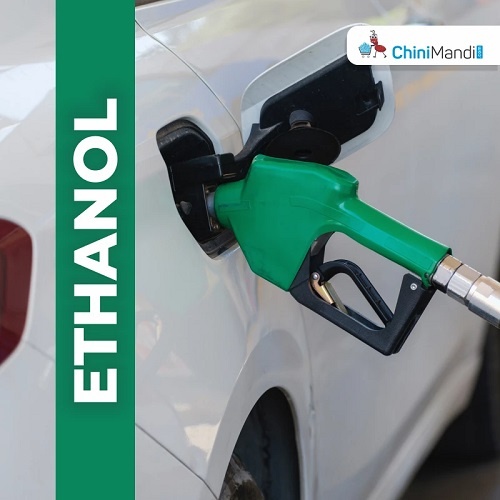Introduction
India is at a pivotal moment in its green mobility journey. Union Road Transport and Highways Minister Nitin Gadkari has proposed cutting the GST rate on crude ethanol from 18% to 5%. This bold move aims to incentivize the adoption of flex-fuel vehicles (FFVs)—a viable and cleaner alternative to petrol and diesel-powered transportation.
Reducing the tax burden on crude ethanol could accelerate India's shift toward sustainable transportation, ease reliance on imported oil, and benefit farmers and the automotive industry alike. In this in-depth article, Manika FinTax Solutions unpacks the implications of this policy change, backed by expert insight, data, and user-friendly analysis.
📉 Why This GST Cut Matters
1. Reduces Cost of Ethanol Production
-
Lowering GST from 18% to 5% would decrease the input cost for oil marketing companies (OMCs), enabling them to purchase ethanol more cheaply
2. Enhances Affordability of Flex-Fuel Cars
-
If ethanol becomes significantly cheaper than petrol, more consumers may adopt FFVs .
3. Strengthens Supply Chain & Farmer Income
-
A GST cut can support higher demand, leading to better prices for ethanol producers—like sugarcane farmers .
4. Reduces Fossil Fuel Imports
-
Substituting petrol with ethanol helps reduce reliance on imported crude, aligning with India’s energy security goals
5. Environmental Gains
-
Ethanol-blended fuels reduce CO emissions by up to 30% and hydrocarbon emissions by 20% in E20 blends
🎯 Flex‑Fuel Vehicles: A Primer
What are Flex-Fuel Vehicles (FFVs)?
-
Vehicles engineered to run on a range of ethanol–petrol blends, commonly E20 to E85.
Key Benefits:
-
Options flexibility: Switch between ethanol and petrol based on cost.
-
Environmental impact: Reduced greenhouse gas emissions.
-
Local production boosts: Supports domestic ethanol industry and job creation.
Adoption Timeline in India:
-
Over 400 fuel outlets already offer E100
-
SIAM reports that two-wheeler FFVs could hit the market in late 2024, while passenger vehicle FFVs may debut in 2025–26
💰 Fiscal & Policy Effects Table
| GST Rate on Crude Ethanol | Current (18%) | Proposed (5%) |
|---|---|---|
| Cost to OMCs | High, limits uptake | Lower, encourages procurement |
| Ethanol Demand | Moderate | Likely to increase |
| Farmer Price Realization | Lower | Higher |
| Vehicle Operating Costs | Higher for E-rich blends | Reduced |
| Import Dependence | High | Lower |
🧩 Challenges Ahead
Despite the positive outlook, some challenges remain:
-
Infrastructure Gap
-
While E100 is present at 400+ stations, E85/E20 infrastructure must expand.
-
-
Consumer Hesitation
-
Concerns about fuel efficiency and engine compatibility; SIAM notes a 6–7% efficiency drop in FFVs
-
-
Environmental Trade-offs
-
Ethanol’s higher vapour pressure may cause higher evaporative emissions, needing stricter tech safeguards
-
-
GST Council Dynamics
-
Any change needs to clear the GST Council, where states may resist revenue loss
✅ Practical Tips for Consumers & Businesses
For Consumers:
-
Watch for E20/E85 stations: Start using ethanol blends as they become available.
-
Choose flex-fuel-ready vehicles: Upcoming models from Tata, Maruti, Toyota support high ethanol blends
For Businesses:
-
Fuel station upgrades: Install E85 pumps and storage.
-
OEM readiness: Plan engine compatibility for ethanol blends.
-
Farmer collaboration: Secure steady feedstock supply by partnering with growers.
🔚 Conclusion
Union Minister Gadkari’s proposal to reduce GST on crude ethanol is more than tax talk—it’s a catalyst for India’s greener transport future. By lowering costs, empowering consumers, and uplifting farmers, India can fast-track the adoption of flex-fuel vehicles and reduce fossil fuel dependence.
However, success depends on infrastructure growth, policy execution, and overcoming consumer concerns. With coordinated efforts, this policy move could rewrite India’s mobility story—towards sustainability and economic resilience.
FAQs
1. What is crude ethanol?
Unrefined ethanol from biomass or grain, used directly in vehicles or blended with petrol.
2. How is it taxed now?
Currently, 18% GST; Gadkari proposes cutting it to 5% to match EBP programme ethanol.
3. What’s E20 and E85?
The percentage of ethanol in petrol blends—E20 is 20% ethanol, E85 is 85%.
4. Do flex-fuel vehicles exist in India?
Yes—around 400 stations offer E100; two-wheeler FFVs by late 2024 and four-wheelers by 2025–26 are expected
5. Why cut GST on crude ethanol?
To lower costs, boost consumption, support farmers, cut imports, and reduce emissions.
🚀 CTA - Need Expert GST & Tax Filing Support?
For personalized GST strategy, ethanol business guidance, or flex-fuel vehicle tax compliance, contact Manika FinTax Solutions today for efficient, paid filing support.



Post a Comment
0Comments